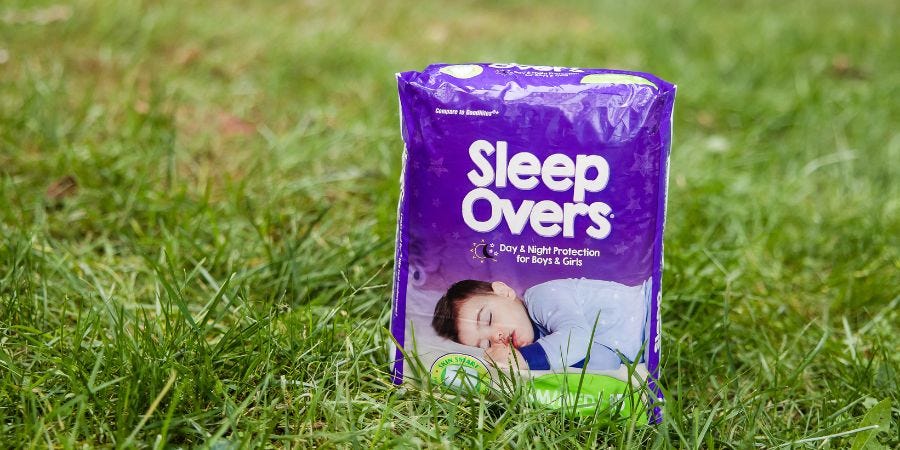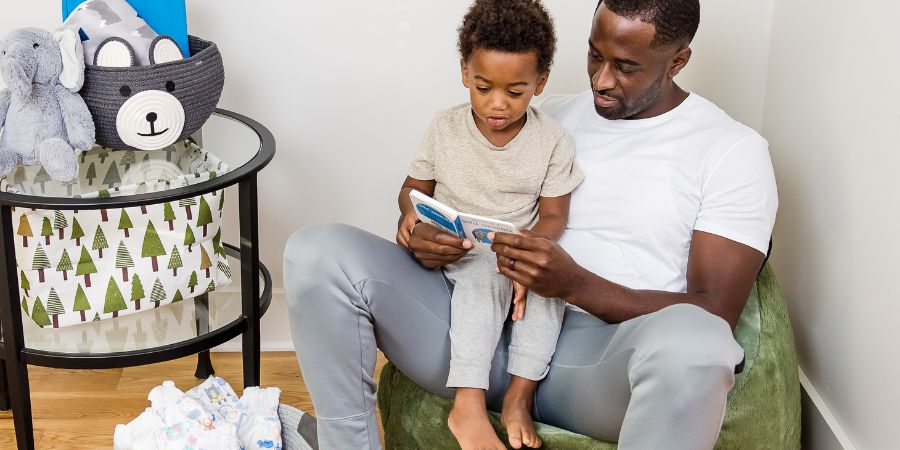Key Takeaways:
- Children with Down syndrome usually start potty training around 3.5 to 5 years of age, which is later than children without the condition.
- Cognitive ability, fine motor skills, and sensory sensitivities may contribute to delayed potty training in children with Down syndrome.
- Children with Down syndrome may be able to receive free bladder control supplies with Aeroflow Urology.
Jump To:
How Does Down Syndrome Affect Kids?
Delayed Potty Training & Down Syndrome
INCONTINENCE PRODUCTS THROUGH INSURANCE:
Aeroflow Urology is in-network with many Medicaid and Medicaid-managed insurance plans and is accredited by Medicaid. Complete our Eligibility Form, and we’ll automatically check to see if your plan covers incontinence supplies. ***Must meet certain requirements to qualify.***
You will also receive the care and attention every person managing incontinence deserves: A personalized list of 100% insurance-covered incontinence supplies, a dedicated Continence Care Specialist you can contact during business hours, a user-friendly online portal for easy monthly reordering, and educational content.
Get the continence care you need with the dignity you deserve. Join the Aeroflow Urology family today! It only takes 5 minutes to get started.


Check Your Eligibility
2 Easy Steps
Discover the continence care essentials available through your Medicaid plan.
Toilet training any child is a long journey for both parents and kids. Bedwetting, daytime accidents, and fear of unfamiliar toilets are all common among little ones transitioning from diapers to the potty.
And, if your child has a special need, such as Down syndrome, potty training can come with even more obstacles. While children with this condition all have unique capabilities, some may not be ready to potty train when other children are, and some may develop incontinence as a result.
In this article, we’ll answer some questions about your child’s potty training process with Down syndrome. We’ll also give you helpful tips for making this transition easier for you and your loved one. Plus, we’ll tell you how to get free incontinence products for your child with Aeroflow Urology!
How Does Down Syndrome Affect Kids?
Around 6,000 babies are born with Down syndrome every year in the United States, and studies show that families who have a child with this special need are stable, happy, and supportive.
Support from caregivers or other family members is crucial for children with Down syndrome because, while each child is unique in their abilities, they may have other medical, physical, cognitive, and behavioral challenges.
Babies and children with Down syndrome may be born with or develop other medical conditions, such as:
- Leukemia
- Heart defects.
- Gastrointestinal (GI) complications, such as constipation.
- Autoimmune disorders.
- Incontinence (loss of bladder or bowel control).
- Delayed potty training.
- Toileting issues.
- Lower urinary tract dysfunction.
- Autism
- Hearing loss.
- Feeding difficulties.
- Fine motor skill delays.
- Low muscle tone (hypotonia).
- Spinal problems.
- Sleep apnea (temporary loss of breathing during sleep).
- Eye diseases.
- Delayed physical growth.
- Ear infections.
Children with Down syndrome may also have unique cognitive functions, including:
- Mild to moderate cognitive impairment.
- Delayed speech and language.
- Sensory sensitivities.
- Memory issues.
- Poor judgment.
- Impulse control.
Delayed Potty Training & Down Syndrome
The average age children begin to potty train in the US is between 2 and 3 years old. However, for children who have Down syndrome, the process usually starts when the child is around 3.5 to 5 years of age.
While these numbers are backed by research, each child with Down syndrome’s path to potty training is unique. Some caregivers report their children were 100% toilet trained as a 3-year-old, and others say their loved ones were able to use the bathroom at age 6 or 7.
Whatever age your child may be ready to potty train, research shows that Down syndrome can cause notable delays in toilet training in some children.
Delays in toileting in your child may be attributed to:
- Cognitive ability. Because some children experience cognitive developmental issues or delays, it may simply take longer for your child to potty train.
- Fine motor skills. Certain children lack fine motor skills, making undressing, wiping, or taking a diaper on and off difficult.
- Communication ability. A big part of potty training is communicating back and forth with your child about when they need to use the bathroom. It may be more challenging if they are non-verbal or are delayed in language.
- Sensory sensitivity. Your child may have sensory issues which can cause fear of using unfamiliar restrooms, loud noises like the toilet flushing, or an aversion to underwear, diapers, wiping, etc.
- Constipation. Due to feeding issues, other medical conditions, or hypotonia, constipation may develop in your loved one. This can create a pattern of stool withholding, fecal retention, or encopresis (pooping in places other than the toilet), all of which make toilet training more difficult.
- Hypotonia. If your child has low muscle tone, getting on and off the toilet may be more strenuous for them.
Developing Incontinence
Research shows toileting delays increase children’s risk of bladder and bowel control issues. This is because the inability to use the toilet leads to uncontrollable voiding of the bladder or bowels.
Some children with Down syndrome may never be fully potty trained, which means they will manage incontinence and other children who successfully learn to use the toilet regress later on and develop the condition.
In a study of 317 people who had Down syndrome, incontinence was present in 64% of children and 10% of teens, and the risk of developing incontinence increases as people with Down syndrome age; The study showed incontinence was present in 12% of adults ages 18-30 and 22% of adults ages 30 and up.
Your child may experience one, two, or both types of incontinence as a child or as they age:
Urinary incontinence (UI): Loss of bladder control.
Fecal incontinence: Loss of bowel control.
Getting Your Child Free Incontinence Products
Incontinence may be lifelong for people with disabilities, but symptoms are manageable. If your child has developed incontinence, you can use pediatric incontinence products, such as diapers, underpads, or pull-ups, to control bladder and bowel leaks.
Usually, purchasing these essential supplies out-of-pocket will cost you anywhere from $900 to $4,000 per year in the US, but if your family or child with Down syndrome has a Medicaid plan, it might be possible to get your child’s products covered through insurance with a supplier like Aeroflow Urology!
We know that necessary continence care shouldn’t cost you thousands of dollars, which is why our mission is to supply those in need with a range of high-quality incontinence products at little-to-no cost. If your child is eligible, we’ll help make managing their symptoms a breeze by…
- Connecting you with an expert Continence Care Specialist who will answer any questions you have about incontinence or our products.
- Reaching out to your child’s healthcare provider for their required prescription on your behalf.
- Offering free diapers, pull-ups, or other product samples before choosing your supplies, so you know the items you choose meet your child’s unique needs.
- Shipping your child’s products in unmarked boxes straight to your door for free.
- Sending you email or text message reminders to let you know when to refill your supplies, so your child never runs out.
All you need to do to see if your child qualifies for these convenient services is fill out our quick Eligibility Form. You’ll just need your insurance card nearby! Once you submit the form, our specialists will determine your child’s coverage and contact their healthcare provider’s office for their prescription. After we receive it, we’ll reach out to you within 1-2 business days and help you with the next steps!
*If you’d like to receive your child’s products sooner, you should let your provider’s office know Aeroflow Urology will be faxing them a prescription request.
Toilet Training Tips for Parents
If you’re beginning the process of potty training your child with Down syndrome, use this guide.
Don’t Depend on Age
Since no one child with Down syndrome has the same developmental or physical abilities as another, the age your child begins to use the toilet can vary and, according to Dr. Kishore Vellody of the UPMC Children’s Hospital of Pittsburgh, age should not be the only factor you consider when wondering when to start potty training. If your child is around 3 or 4, but they don’t seem ready to transition out of diapers, don’t push them. Doing so could lead to resistance, which is stressful for everyone and could result in a longer potty training process. It may also discourage your child from trying since they will succeed less. Trust that your little one will show signs of readiness!
Know the Signs
Pay attention to the cues your child displays that show they’re capable of beginning the toilet training process. Remember that each child is unique and may not exhibit all of these signs. Your child may be ready if they:
- Walk to the bathroom.
- Climb onto or sit on the toilet seat.
- Stay on the toilet for a few minutes without wanting to get off (even if just to practice sitting on it).
- Acknowledges when their diaper or clothes are soiled or wet.
- Follow verbal instructions, such as, “Let’s go to the bathroom,” “Sit down,” etc.
- Communicate that they need to pee or poop, either verbally or non-verbally.
- Display interest in self-care and hygiene, like washing their hands or brushing their teeth.
- Show curiosity about other people using the toilet.
- Have regular bowel movements.
- Void their bladder fully with extended periods of dry diapers in between voids.
Give Praise & Encouragement
You should praise and encourage your child throughout the potty training process, even when they simply try to sit on the toilet. Whether it’s by telling them they’re doing a great job letting you know when they need to go or by rewarding them with a treat or fun activity after they successfully void in the potty, be sure to keep it up! Reward and encouragement are reinforcements that will excite your child about using the toilet.
Stick to a Schedule
Children who have Down syndrome do best when they have a routine and may not do as well without it. The first step in creating a schedule is to observe your child’s natural voiding patterns. Pay attention to what times or how often their diaper becomes wet or soiled, and take them to the restroom to try and sit on the toilet during those times.
Check your child’s diaper every 30 to 60 minutes for about two weeks to determine their body’s pattern. Then, you can create a visual schedule that you and your child can refer to and show them that it’s time to go.
Let Your Child Observe
Many children learn by observing, so if you or your family are comfortable with it, invite your child to come into the bathroom with you so they can see how you use the toilet. For example, you can show them how you pull your pants on and off, sit on the toilet until your bladder is empty, wipe, flush, and wash your hands. If your child is verbal and can understand spoken instructions, it may be helpful to narrate what you’re doing and why as you use the bathroom.
Change Diapers Standing up in Bathrooms
For your baby or young toddler, diaper-changing time is probably comfortable because they usually lay down and don’t need to help during the process. Most caregivers also change their child’s diaper wherever they are to ensure they’re quickly getting the child out of the soiled diaper.
Instead of continuing these practices while potty training your child, take them to the bathroom and change their diaper while they’re standing (if they can stand). By reversing these practices, your child will associate voiding with the toilet, hopefully discouraging them from voiding anywhere else.
Include your child in stand-up diaper changes by showing them how to pull the tabs of their diaper off, roll it, and put it in the trash. Then, after they sit on the toilet, ask them to get a new diaper from an area they can reach and show them how to put it back on. This will give them a sense of independence and accomplishment.
Recognize & Develop Non-Verbal Cues
Whether or not your child is verbal, it’s helpful to understand the signs they may give off when they need to go. For example, some children will move around more than usual, hold their groin area, become agitated, make different facial expressions, or display other physical movements that show discomfort. When this happens, you can verbally let them know it looks like they need to use the restroom and take them.
Another way to help your child communicate when they need to go is by coming up with signs together. For example, you can ask your child to give a thumbs up or use picture cards that show a toilet.
Get a Kids’ Size Potty
The toilets you use might seem big, loud, and intimidating to young children, especially if they are overly sensitive to noises or physical feelings. To ease your child into sitting on the toilet, get a kids’ size potty they can easily climb onto. It may also be beneficial that there are no flushing or other sounds coming from these types of potties. Letting your child choose the potty you buy can get them excited about using it, so make a fun trip out of it and take them to the store with you.
Use Underwear as Soon as Possible
Get your child out of diapers and put them in underwear after they can stay dry for 2 hours or more in their diaper. When your child has an accident in underwear, it will be more uncomfortable for them, and encourage using the toilet for peeing or pooping. If necessary, your child should wear diapers at night or when they’ll be away from home for more extended periods.
Let your child choose which underwear you buy to promote independence and excitement about the transition into underwear.
Distract & Entertain
If your child has difficulty staying on the toilet long enough to void their bladder or bowels, use distraction methods and entertainment to get them to sit longer. While on the toilet, give them toys or books and play or read with them. Another successful distraction is to let your child know they can get off the toilet when a song you sing or play is over (just don’t make the song too long!).
Children with Down syndrome may be delayed in potty training, and some may develop incontinence, but you can manage symptoms and put these toileting tips to use to make the transition easier for your child. This process will come with lots of accidents, tantrums, and setbacks, so remember to take care of yourself, not just your little one! Have patience, and understanding, be prepared, and try to keep the end goal in mind.
Jump To: Top | Eligibility Form
References
The Right Age to Potty Train. (n.d.). HealthyChildren.org. Retrieved July 27, 2022, from https://www.healthychildren.org/English/ages-stages/toddler/toilet-training/Pages/The-Right-Age-to-Toilet-Train.aspx#:~:text=The%20average%20age%20toilet%20training
FAQ and Facts about Down Syndrome. (n.d.). Global down Syndrome Foundation. Retrieved July 27, 2022, from https://www.globaldownsyndrome.org/about-down-syndrome/facts-about-down-syndrome/?gclid=Cj0KCQjwxIOXBhCrARIsAL1QFCZzW5FhJ1FsXnO_RpPVfz-cInhoERiceWUnN6h7Im6Oth_QGowwbQQaAsqVEALw_wcB
https://www.cdc.gov/ncbddd/birthdefects/downsyndrome.html
Mayo Clinic Staff. (2018, March 8). Down Syndrome - Symptoms and Causes. Mayo Clinic. https://www.mayoclinic.org/diseases-conditions/down-syndrome/symptoms-causes/syc-20355977
National Institute of Child Health and Human Development. (2017, January 31). What are common symptoms of Down syndrome? Http://Www.nichd.nih.gov/. https://www.nichd.nih.gov/health/topics/down/conditioninfo/symptoms
Toilet Training Podcast, Part 1 | Children’s Hospital Pittsburgh. (n.d.). Children’s Hospital of Pittsburgh. https://www.chp.edu/our-services/down-syndrome/podcasts/toilet-training
Reif, R. (2017, June 7). The Ultimate Guide to Potty training and Down syndrome. Reif Counseling Services. https://rosereif.com/potty-training-down-syndrome/
Niemczyk, J., von Gontard, A., Equit, M., Medoff, D., Wagner, C., & Curfs, L. (2016). Incontinence in persons with Down Syndrome. Neurourology and Urodynamics, 36(6), 1550–1556. https://doi.org/10.1002/nau.23146
Powers, M. K., Brown, E. T., Hogan, R. M., Martin, A. D., Ortenberg, J., & Roth, C. C. (2015). Trends in Toilet Training and Voiding Habits among Children with Down Syndrome. The Journal of Urology, 194(3), 783–787. https://doi.org/10.1016/j.juro.2015.03.114
https://www.ndsccenter.org/wp-content/uploads/toilet-training-guide.pdf
Disclaimer
Information provided on the Aeroflow Urology blog is not intended as a substitute for medical advice or care from a healthcare professional. Aeroflow recommends consulting your healthcare provider if you are experiencing medical issues relating to incontinence.











